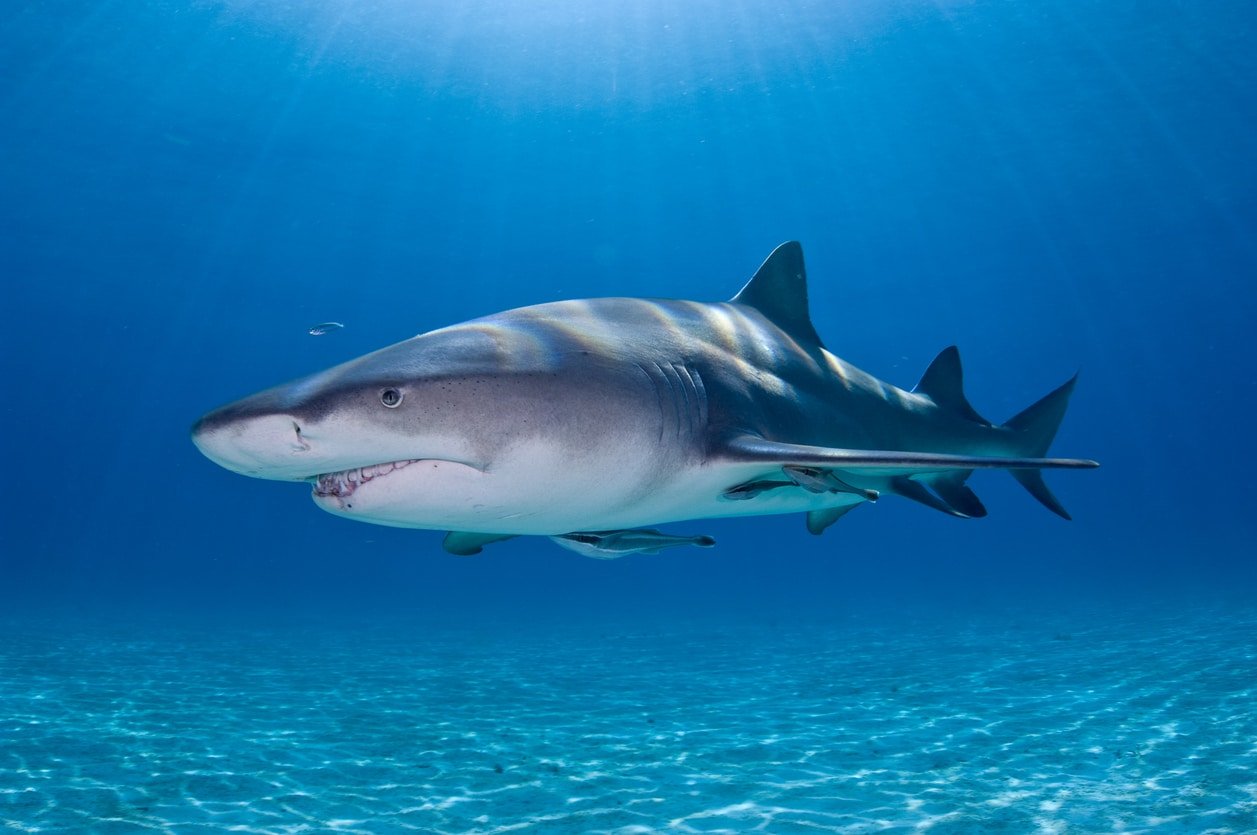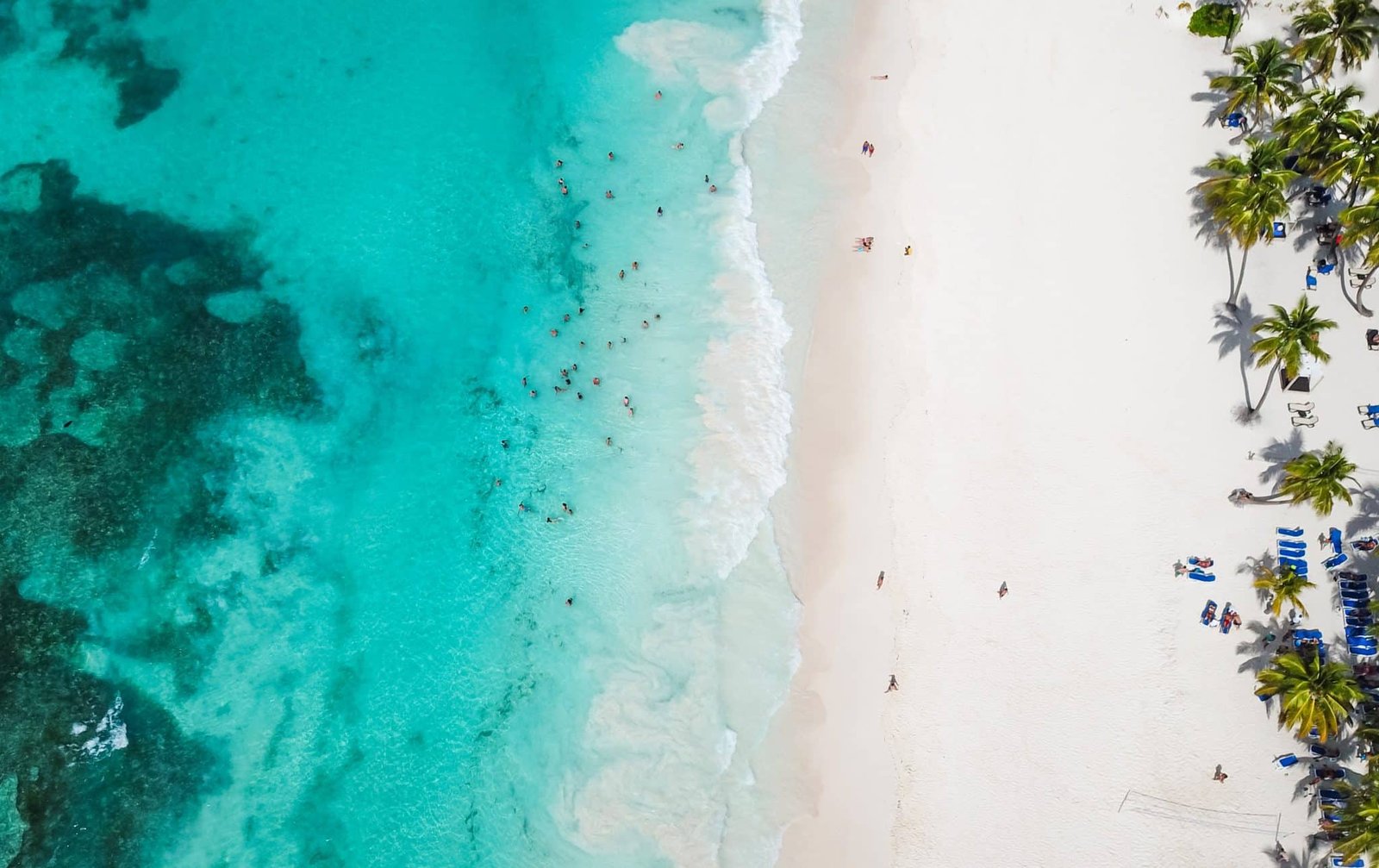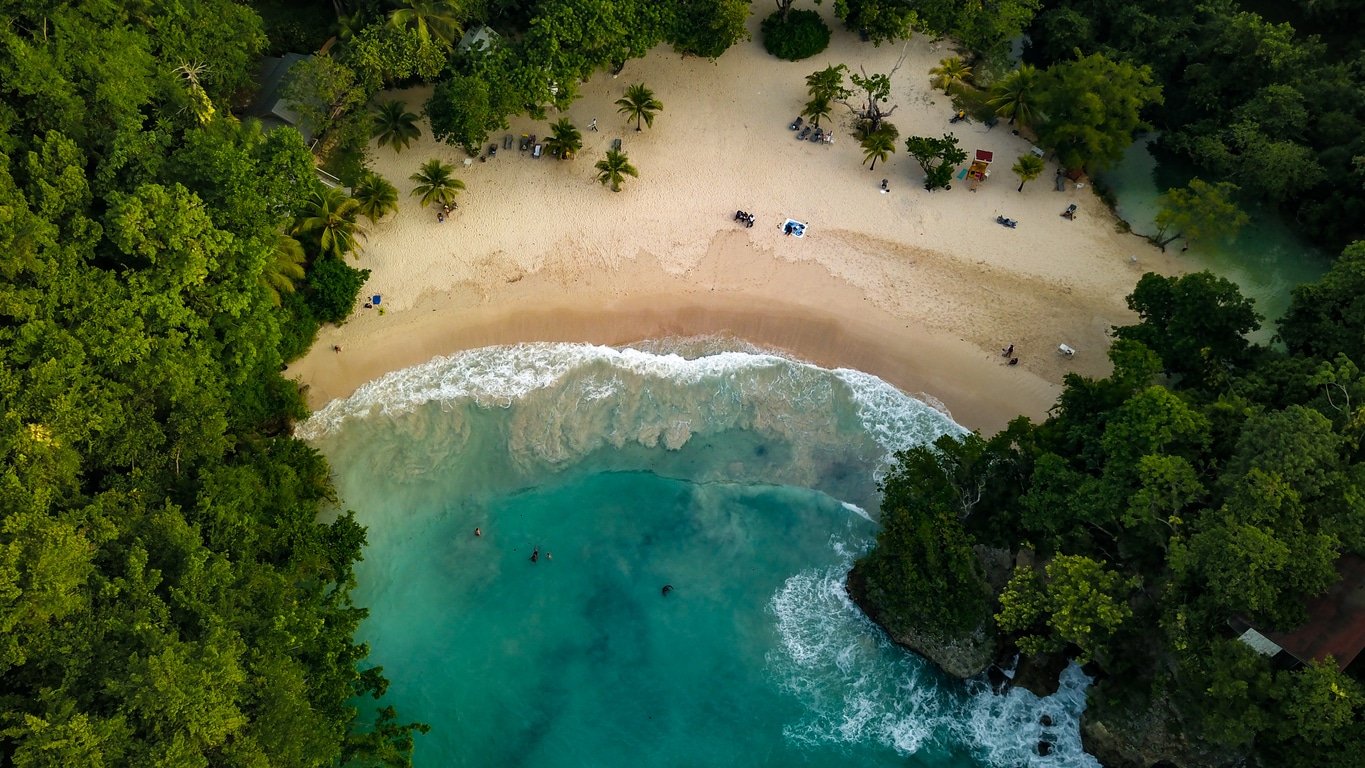Sharks in Jamaica: Attacks, Common & Dangerous Species, Staying Safe & More
|
Prefer listening over reading? We got you covered!
Getting your Trinity Audio player ready...
|
Shark attacks do not happen as frequently as people think, and where you visit definitely determines the likelihood of an attack. Just because you are near a beach or on a tropical island doesn’t mean you are guaranteed to see sharks.
However Jamaica does have sharks swimming in its reefs and shallow waters close to beaches, so you may see sharks while swimming, diving, snorkeling, or even surfing. However thankfully, the most dangerous sharks will often be found in deeper waters or around the edges of reefs.
With that the case, it is important to know how common shark attacks are in Jamaica, if you’ll be safe, and what types of sharks to watch out for.
Luckily we’re going to be exploring everything you need to know right here, so you can stay safe from sharks while on your Jamaican vacation.

How Common Are Shark Attacks in Jamaica?
From 1900 – until now, there have been 19 reported shark attacks, including provoked and unprovoked attacks. Eight of those attacks have been fatal. So as you can see, it’s not common for sharks to attack and kill people in Jamaica, though it can happen.
Since 2000, there have only been three reported shark attacks in Jamaica, and one of those has been attributed to somebody that drowned and was then nibbled on by a shark.
One thing to note is that not all shark attacks can be attributed to a specific location or even reported accurately. For example, in May 2021, a 53-year-old fisherman was out at sea and was attacked by a shark; he later died. This has been reported in the news but hasn’t been added anywhere as a shark attack with a fatality yet.
There is another report of a fisherman in 2019 who was attacked and lost his hand from a possible Tiger Shark attack. He was underwater fishing for conch, and the shark approached to take the bag of conch he had collected.
Both of these recent attacks happened in Westmoreland, so there may be a higher probability of shark attacks in this area than others. Or it may just be that the fishing industry in the area also attracts sharks. Either way, neither attack has been reported and included in any online statistics that can be found. So in general shark attacks do seem to be slightly underreported.
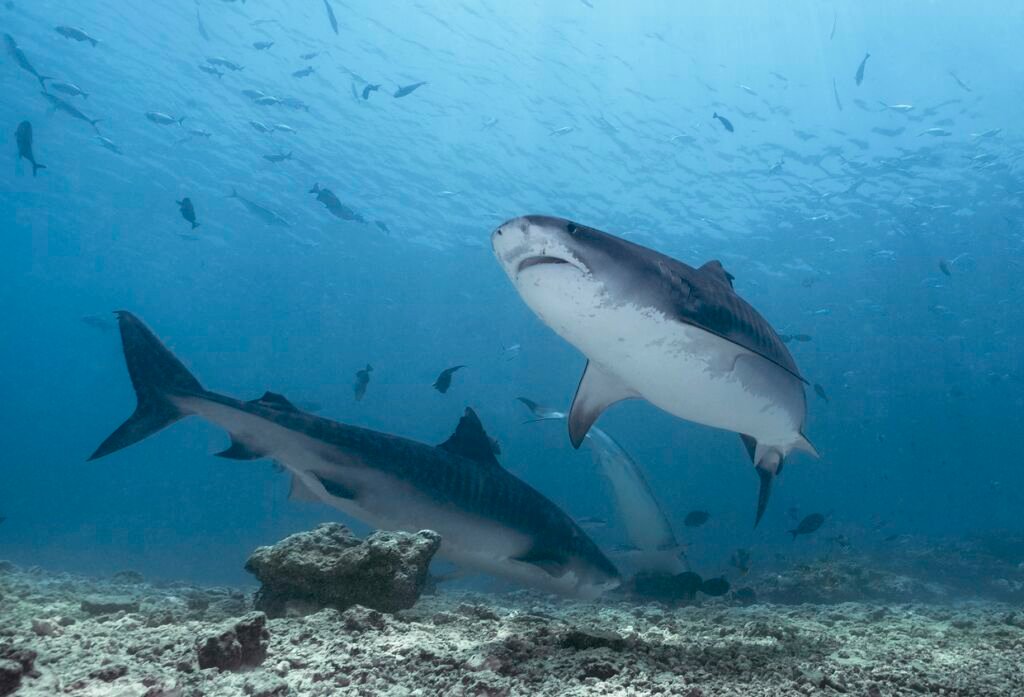
Common Sharks That Live In Jamaica: Species You May See
Jamaica has very warm waters year-round, and that determines which kind of sharks prefer to swim and live here. In addition, it is enclosed by the Caribbean Sea rather than an open ocean, and that lessens your chances of seeing sharks that prefer colder open ocean, such as the feared Great White Shark.
1. Caribbean Nurse Shark
Caribbean Nurse Sharks are extremely common sharks in Jamaica and everywhere else in the Caribbean. They are not generally dangerous to humans; however, they will bite if you step on them or actively provoke them. Many tourists often swim with and feed Nurse Sharks with no problem.
You will find the Nurse Shark close to shore, sitting on the bottom of the sea, looking for small fish to eat. You may also find them hiding in underwater rock areas or reefs. These sharks average out to 8 feet long and 200 lbs.
In 2021 there were 9 Nurse Shark attacks worldwide and no fatalities from them. While these attacks are considered unprovoked, people likely got too aggressive when touching the sharks.
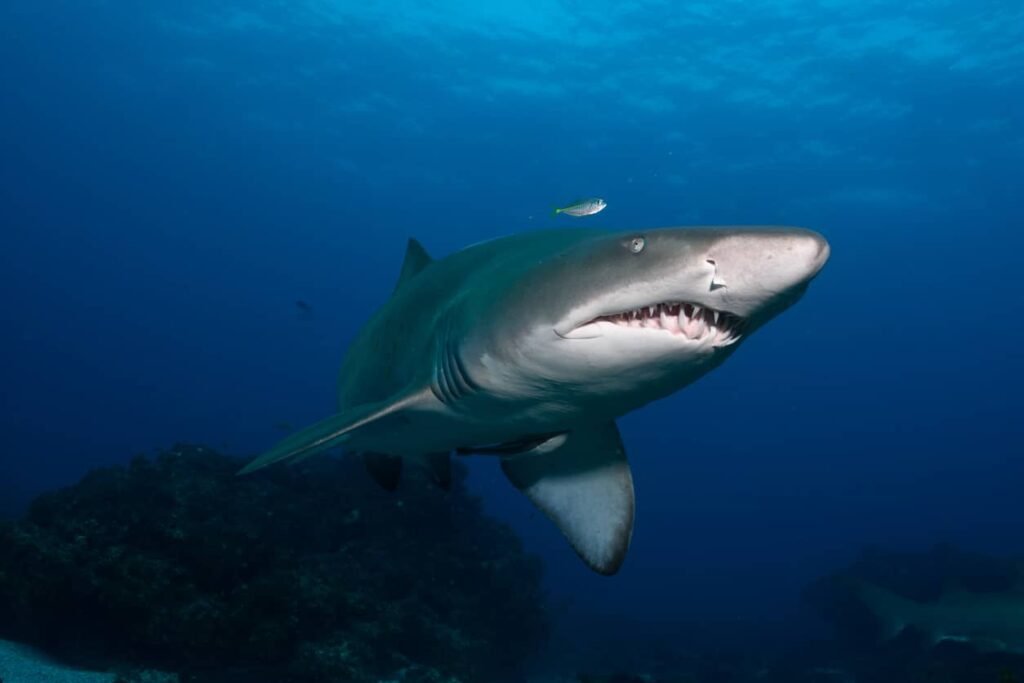
2. Caribbean Reef Shark
Caribbean Reef Sharks are extremely common around the reefs of Jamaica and have a typical long grey body that you associate with sharks, so they can be difficult to pinpoint as a Caribbean Reef Shark in most cases. However, they can grow to 10 feet long and 150 lbs.
While Caribbean Reef Sharks are considered uninterested in divers or humans in general, they can attack or bite, specifically when food is involved. So if you’re fishing or get caught in a school of fish, this may be when you could be bitten. In 2021, there have been four attacks with no fatalities from this shark.
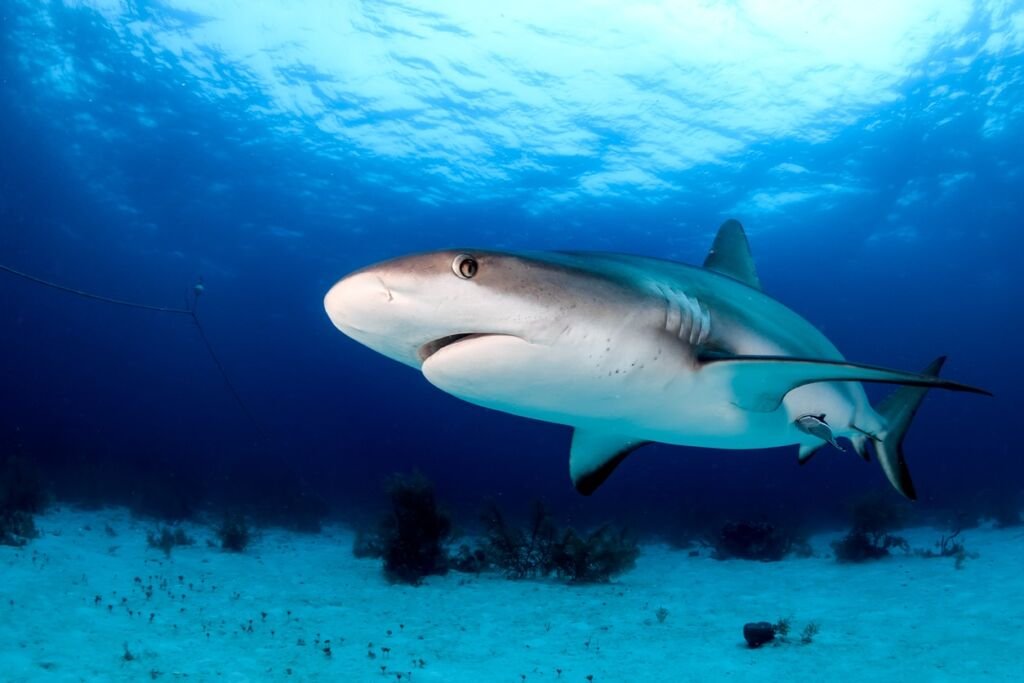
3. Lemon Shark
Lemon Sharks have a somewhat yellow appearance which is where their name comes from. They can grow up to 10 feet and weigh 200 lbs. You’ll find them mostly in shallow water, with a sandy or rocky bottom, as that is where they are best camouflaged and can seek out their prey.
Lemon Sharks don’t pose a significant risk to humans, and unfortunately are being driven to extinction from overfishing and habitat loss. There have been ten unprovoked attacks on humans, but none have been fatal.
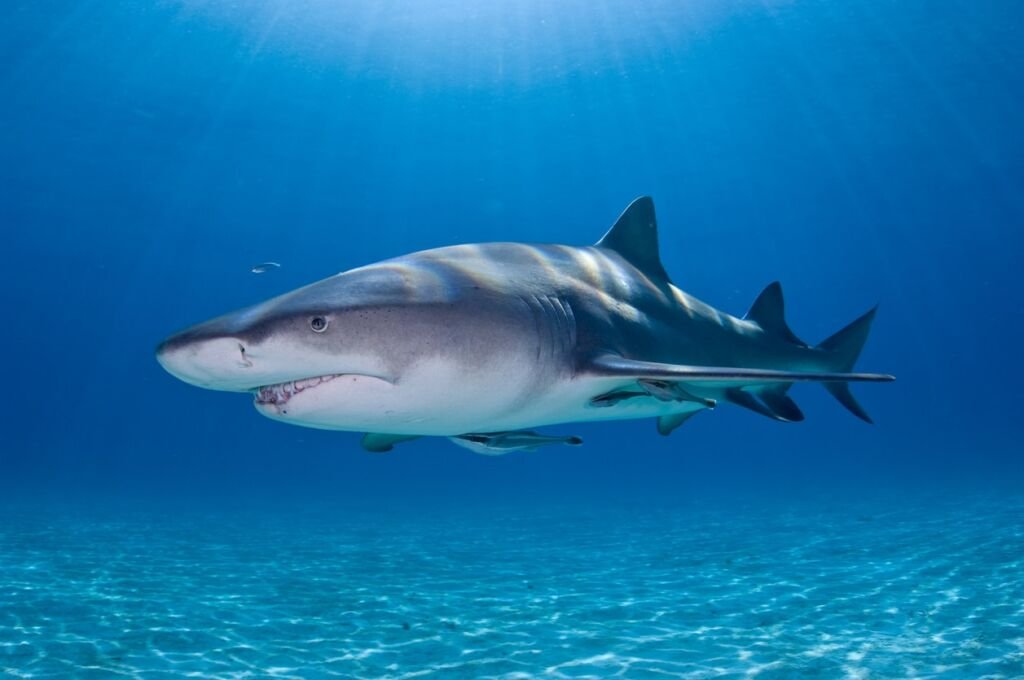
4. Caribbean Sharpnose Shark
Caribbean Sharpnose Sharks are on the smaller side averaging around 3 feet long and 7 lbs and have a long head and snout making them quite distinctive.
This shark can be found in surfing areas and estuaries, so it often comes into contact with humans. Attacks by Sharpnose Sharks can happen pretty often but are generally not recorded because these sharks are so small that attacks are not serious or life-threatening in any way.
5. Blacknose Shark
Blacknose Sharks are another common species found around Jamaica. Younger sharks will be found in shallower waters, while adults prefer to stick to depths up to 200 feet. On average, they grow to 5 feet long and weigh 22 lbs. They have a dark patch on their long snouts, which gives them their name.
Blacknose Sharks have not been reported as attacking humans; however, unfortunately it’s a popular shark to be fished, so has more to be afraid of from humans than we do of it.
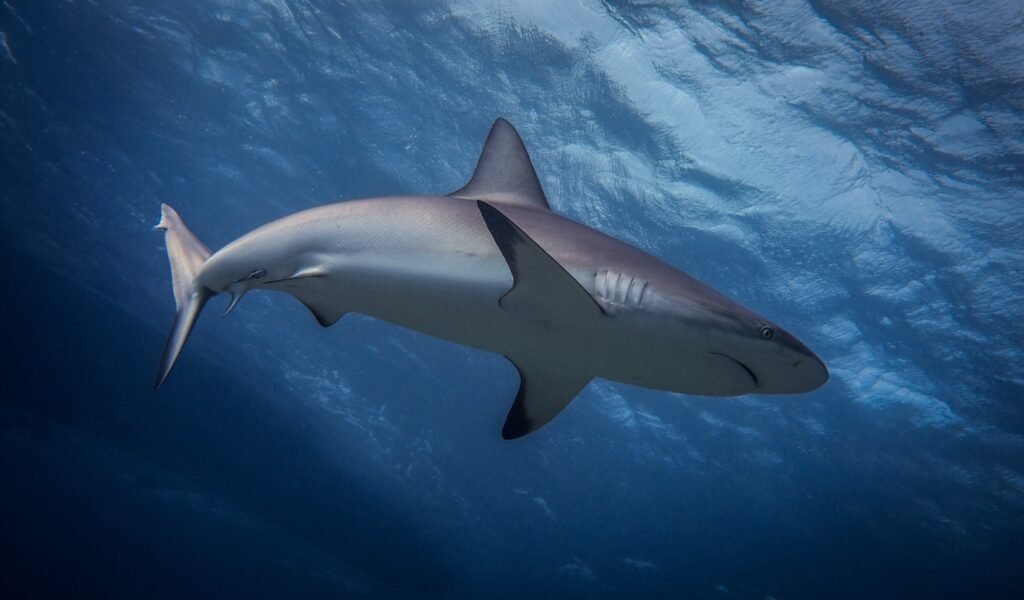
6. Scalloped Hammerhead Shark
Scalloped Hammerhead Sharks are the third largest of the hammerheads and are the most common that you find in Jamaica and overall. They have the distinctive hammer-shaped head and can reach lengths of 14 feet and weights up to 350 lbs.
These sharks are not often seen in shallow waters, except when they’re young, where they hide in mangroves or other areas with good protection from predators. Adults do stick to the coastline and continental shelves though, so these are not deep-sea sharks.
There are nine different species of hammerhead shark, and only three have ever been recorded to attack humans. Scalloped Hammerhead Sharks are included in that. In 2021 there were 16 overall hammerhead attacks on humans, with none being fatal.
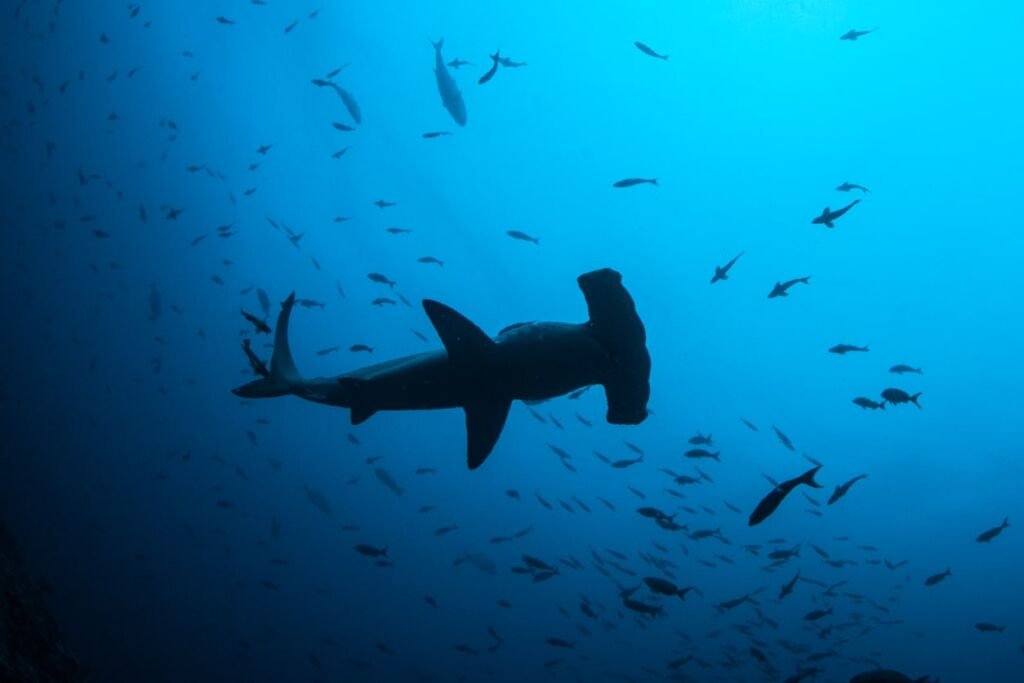
The Three Dangerous Sharks In Jamaica To Watch Out For
There are dangerous sharks in Jamaica, and as we explaining earlier many of the attacks are not being reported. The two most dangerous sharks in Jamaica are the Tiger Shark and the Bull Shark.
1. Tiger Shark
Tiger Sharks are considered the second most dangerous shark in the world, behind Great White Sharks. In 2021 alone, there have been over 130 Tiger Shark attacks reported worldwide, with at least 34 fatalities. Tiger Sharks are also being implicated in the attacks and deaths which are going unreported in Jamaica amongst fishermen.
Tiger Sharks can grow to be over 16 feet long and weigh up to 1,400 lbs, so it’s a massive predator. Aside from being large, its telltale striped tiger appearance will assist in identifying it.
These sharks can be found in coastal waters in depths as shallow as 10 feet but are generally found in deeper water.
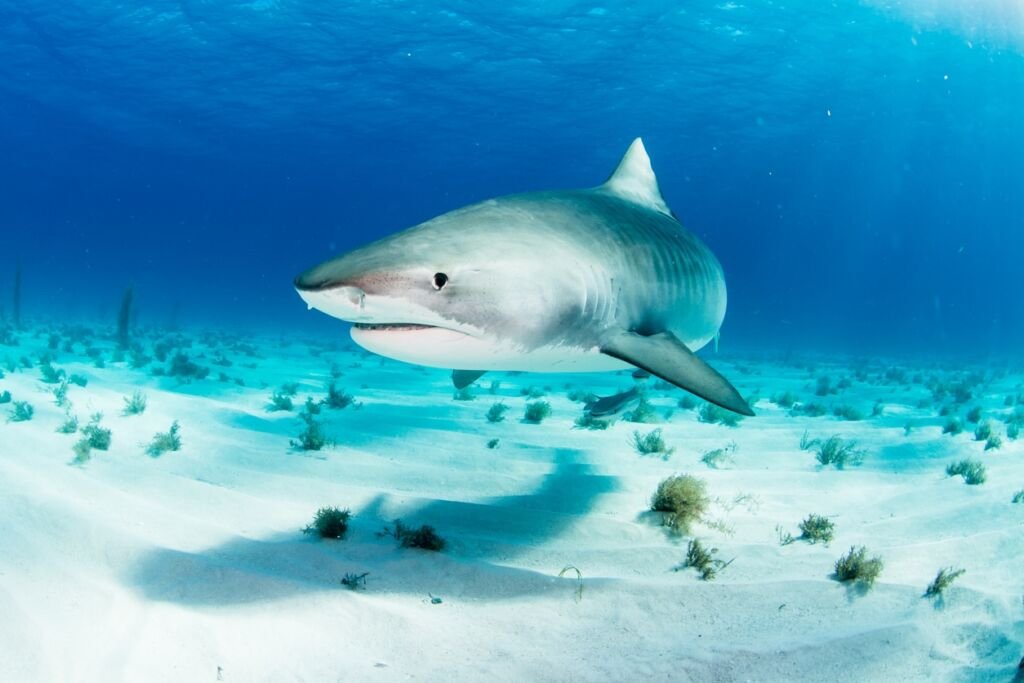
2. Bull Shark
Bull Sharks can also be found in Jamaican waters. It prefers shallow water, and it’s even been found in freshwater areas, including rivers and lakes. Bull Sharks have a large, stocky appearance; they average 8 feet long and 290 lbs.
Because Bull Sharks spend more time in shallow waters and even in freshwater, they have more interaction with humans, which along with their highly aggressive nature, makes it more common to be bitten by them than many other sharks.
In 2021 there were over 110 Bull Shark attacks worldwide with at least 25 fatalities. They are considered the third most dangerous shark, only behind Great White Sharks and Tiger Sharks.
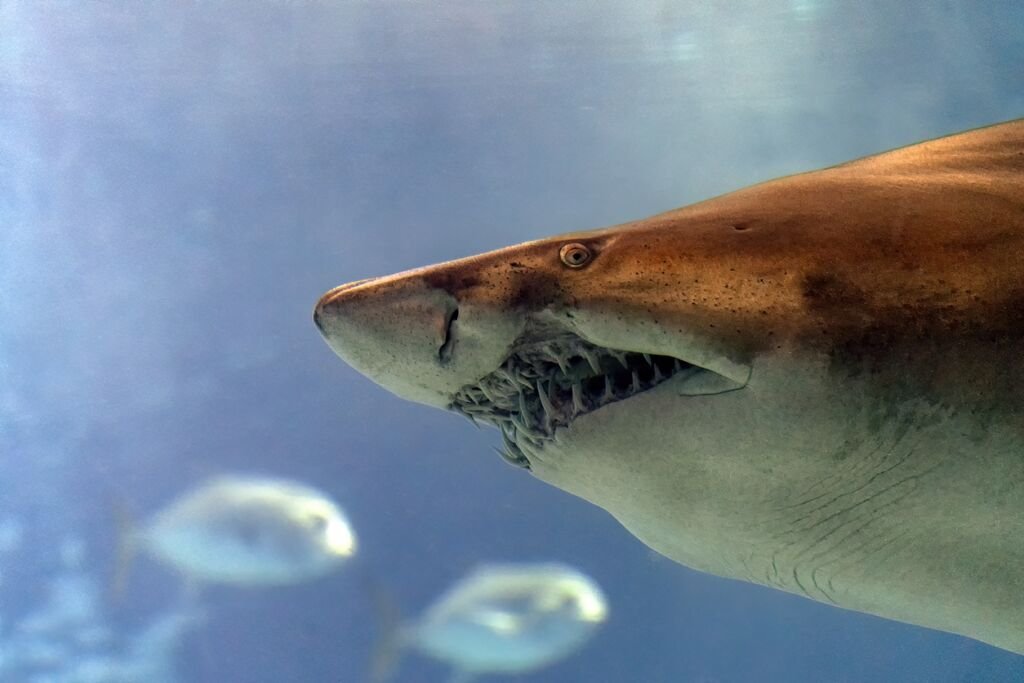
3. Great Hammerhead Shark
The Great Hammerhead Shark is the largest of all the hammerhead sharks, reaching up to 20 feet long and weighing over 600 lbs. All hammerhead sharks have a distinctive hammer shape to their heads, as the name suggests.
They can be found in reefs around Jamaica but can certainly be found in other areas; they can come as shallow as 3 feet and have also been found at depths of 260 feet.
Great Hammerhead Sharks are considered the most aggressive of all hammerhead sharks, and being the largest, they pose a significant risk to humans. They have also been reported to charge divers when entering the water, though there have been limited attacks and no fatalities reported.
What Should You Do If You Come Across a Shark?
Stay calm and don’t flail your arms or legs around, as the thrashing can attract a shark to investigate to see if you’re food. By investigation, sharks will nibble on you to see what you are.
Keep eye contact with the shark if possible and slowly swim away from it. Try to stay vertical rather than horizontal when moving away from the shark.
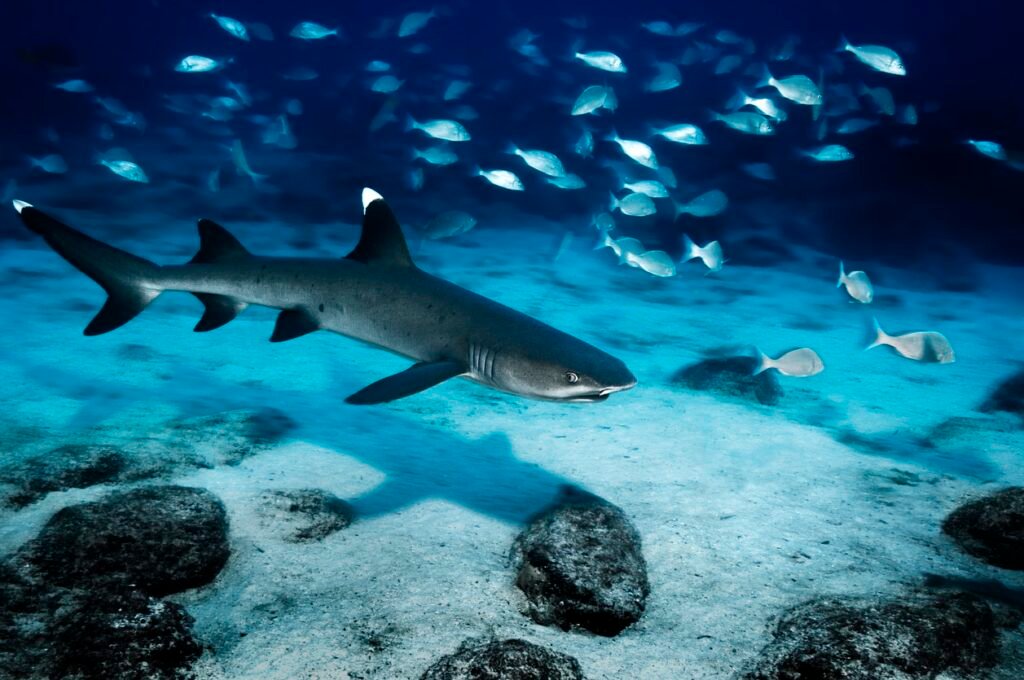
Sharks In Jamaica: Our Final Thoughts
Jamaica is very safe for anybody looking to enter the water and enjoy the Jamaican coastline, so you shouldn’t have any significant concerns about sharks or anything else in the water on your holiday. (Related: Snakes in Jamaica).
Shark attacks are very rare, especially in Jamaica. However they can happen, and often what you’re doing will affect the likelihood of an attack. Spearfishing or collecting shellfish or other seafood would not be advisable, especially if done alone.
You should also be careful when interacting with any sharks. If diving, be wary of any sharks that approach you aggressively. There are at least two sharks in Jamaica that are known to threaten humans when diving.


